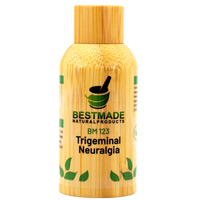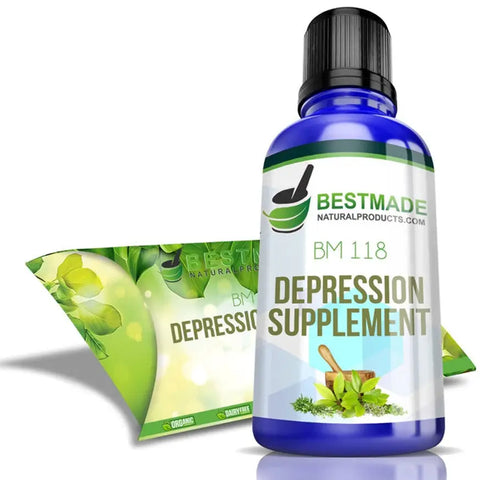
Mastering the Basics of the Elimination Diet: Your Comprehensive Guide
Have you ever experienced persistent bloating that won't go away or skin irritations that seem to appear out of nowhere? How about feeling super tired even after resting? If these sound familiar, you’re not alone; and your food might be part of the puzzle.
Meet the elimination diet – the perfect way to figure out if certain foods are causing you problems. If you're curious about how what you eat affects how you feel, the elimination diet could be just what you need.
In this blog, we'll show you all about elimination diets. We'll break down what they are, the different kinds, and why they can be a big help. We'll also look at other similar diets to help you find the best fit.
Keep reading to learn how to use elimination diets to understand your body better and get back to feeling fabulous!

BM156 may aid your stomach from indigestion, gas, bloating, nausea, and heartburn. Recommended for gas and indigestion, a painful and burning sensation in the upper abdominal region, bloating, belching, diffuse abdominal pain, heart pain, nausea, and vomiting.
What is an elimination diet?
An elimination diet or allergy diet is a systematic approach to identifying food allergies, sensitivities, or intolerances by temporarily removing specific foods or food groups from your diet and then gradually reintroducing them to pinpoint which ones might be causing adverse reactions.
This process helps individuals identify specific foods contributing to their discomfort.

What are common signs of food allergies, sensitivities, and intolerances?
Have you ever noticed that certain foods leave you feeling less than your best? Maybe you've experienced mysterious symptoms that you can't explain. These could be signs that your body is reacting to certain foods in a less friendly way.
BM39 is best used for mastocytosis (numerous, itchy, irregular, yellow or orange-brown swelling on the skin); allergy from food (milk, eggs, shellfish or nuts); and medicine allergy.
Let's look at some common symptoms that suggest it's time to consider an elimination diet.
Signs of Food Allergies:
- Skin Reactions: Red, itchy bumps (hives) or inflamed, itchy skin (eczema).
- Breathing Issues: Runny nose, sneezing, coughing, or trouble breathing.
- Digestive Problems: Feeling sick, vomiting, or stomach pain.
- Swelling: Swollen face, lips, or eyes.
- Emergency Reaction: Anaphylaxis – trouble breathing, rapid heartbeat, drop in blood pressure.
BM163 is best used for catarrh (constant flow of mucous) caused by the inflammation of the mucous membrane by viral or bacterial infection. Useful for stuffy and blocked nose, coughing, headache, sneezing, feverish feeling, body pains, tenderness in cheeks, dry and sore nose, loss of smell and taste, etc.
Signs of Food Sensitivities:
- Digestive Issues: Bloating, gas, diarrhea, or stomach pain.
- Skin Issues: Rashes, acne, or itchy skin.
BIO20 supports healthy cell regeneration and promotes the skin's youth, radiance, and healthy appearance. This combination of cell salts is useful for eczema, psoriasis, acne, pemphigus, and dandruff. It is also useful for visible scars, cradle caps, and neonatal dermatitis.
- Breathing Problems: Stuffy or runny nose, coughing.
- Joint Pain: Aching, stiff joints.
- Low Energy: Feeling tired and lacking energy.
- Headaches: Frequent or bad headaches.
BM11 provides natural support for all types of headaches and fatigue. Best used for throbbing, sharp, and nerve pain. Useful for congestion problems. It supports healthy sleep.
Signs of Food Intolerances:
- Digestive Issues: Gas, bloating, or diarrhea after eating certain foods.
- Lactose Intolerance: Feeling sick, bloated, or having stomach cramps after dairy.
- Fructose Intolerance: Bloating, gas, or diarrhea from fruits or sweet foods.
- Histamine Intolerance: Headaches, hives, or digestive issues after histamine-rich foods.
BIO8 is useful for diarrhea. It may help the body deal with watery stools. Natural support for an upset stomach due to rich or fatty foods. It is safe and effective to use at all times.
Suppose you've been experiencing any of these symptoms regularly. In that case, your body might be trying to tell you something; an elimination diet could provide the answers you want.
Remember that everyone's body is unique, and the symptoms you experience could vary.

Why should you do an elimination diet?
A simple elimination diet can offer several potential benefits for individuals experiencing adverse symptoms of food allergies, sensitivities, or intolerances.
Here are some of the benefits:
- Identification of Food Triggers: An elimination diet allows you to identify specific foods or food groups that may be causing adverse reactions.
- Insights for Future Choices: Even if you don't have a diagnosed food allergy or sensitivity, an elimination diet can provide insights into which foods your body tolerates well and which may not. This knowledge can guide your future dietary choices.
- Relief from Symptoms: For individuals experiencing chronic or recurring symptoms, identifying and eliminating problematic foods can lead to significant symptom relief and improved overall well-being.
- Personalized Dietary Approach: An elimination diet provides personalized insights into your body's unique food reactions. This information can help you develop a long-term dietary plan that supports your health and minimizes discomfort.
- Empowerment and Control: Undertaking an elimination diet empowers you to actively participate in your health. It gives you a sense of control over your symptoms and allows you to make informed decisions about your diet.
- Enhanced Quality of Life: If you've been dealing with unexplained symptoms that have affected your well-being, successfully identifying and managing food triggers can improve your overall quality of life.
- Potential Weight Management: Some people may experience weight loss or improved weight management due to eliminating certain foods contributing to overeating or inflammation.
Fit & Healthy - Natural Weight Loss Program may help your body deal with ravenous hunger, overweight, and unnecessary fat around the belly and other body parts.
- Better Digestive Health: If digestive symptoms are a concern, an elimination diet can help identify foods that may exacerbate gastrointestinal issues, leading to better digestive health.
- Management of Chronic Conditions: In cases where certain foods contribute to chronic health conditions such as autoimmune disorders, migraines, or skin conditions, an elimination diet can play a role in effectively managing these conditions.

How does an elimination diet work?
Generally, here's how to do an elimination diet:
1. Elimination Phase: During this phase, you eliminate specific foods or food groups commonly associated with allergies or sensitivities. You'll follow this restricted diet for a predetermined period. It works as a food elimination test.
2. Observation and Symptom Tracking: You carefully track your symptoms and overall well-being while on the elimination diet. You may use a journal or a symptom-tracking app to record any changes you notice.
3. Reintroduction Phase: How to reintroduce foods after a cleanse? After the elimination phase, you gradually reintroduce the eliminated foods, one at a time, in a systematic manner. This allows you to monitor your body's response to each food.
4. Observation and Analysis: During the reintroduction phase, you keep tracking your symptoms and reactions to each reintroduced food. This helps you determine which foods are well-tolerated and which may need to be permanently avoided or consumed in moderation.
5. Long-Term Dietary Adjustments: Based on the results of the elimination and reintroduction phases, you can create a personalized long-term diet plan that avoids problematic foods while incorporating well-tolerated ones. This can help improve your overall health and well-being.
You can consult an example of an elimination diet meal plan here. Inspire yourself and create your own elimination diet menu.
Remember that elimination diets can be valuable tools for identifying and managing food-related issues. However, they should be approached with care and caution to avoid nutritional deficiencies.

What are the different types of elimination diets?
There are several elimination diets, each targeting specific food groups or compounds commonly associated with allergies, sensitivities, or intolerances.
Here are some of the different types of elimination diets:
- Gluten-Free Diet: This diet eliminates gluten-containing grains like wheat, barley, and rye. It is essential for individuals with celiac disease, an autoimmune disorder triggered by gluten consumption. Even small amounts of gluten can damage the small intestine in those with celiac disease. Some people also adopt this diet due to gluten sensitivity, experiencing digestive or other symptoms in response to gluten.
- Dairy-Free Diet: A dairy-free diet excludes all dairy products, which are sources of lactose, a sugar found in milk. It's commonly followed by individuals who are lactose intolerant, meaning their bodies lack the enzyme needed to digest lactose properly.
- FODMAP Elimination Diet: The FODMAP elimination diet targets certain fermentable carbohydrates that can trigger digestive symptoms in people with irritable bowel syndrome (IBS) or other digestive disorders. The acronym stands for Fermentable Oligosaccharides, Disaccharides, Monosaccharides, and Polyols. Foods high in FODMAPs, such as certain fruits, vegetables, and grains, can be restricted during the elimination phase.
BIO25 is best used for a gastric upset, acid indigestion, gas, bloating, and vomiting - typical problems of Irritable Bowel Movement. This all-natural cell salts combination offers support for your stomach problems.
- Paleo Diet: The Paleo diet mimics the dietary patterns of our Paleolithic ancestors. It eliminates processed foods, grains, legumes, and dairy, focusing on whole foods such as lean meats, fish, fruits, vegetables, nuts, and seeds. Proponents believe this diet reflects the evolutionary diet of our ancestors and may promote better health.
- Autoimmune Protocol (AIP) Diet: The AIP diet is an extension of the Paleo diet, designed to help manage autoimmune conditions. It eliminates potentially inflammatory foods like nightshade vegetables (e.g., tomatoes, peppers), eggs, nuts, and seeds. The goal is to reduce inflammation and support the immune system.
- Low-Histamine Diet: This diet restricts foods high in histamine, a compound involved in allergic reactions. Histamine-rich foods include aged cheeses, fermented foods, and certain meats.
- Candida Diet: The Candida diet is often followed by individuals seeking to manage an overgrowth of Candida yeast in the body. It restricts foods promoting yeast growth, including sugars, refined carbohydrates, and some dairy products.
- Six-Food Elimination Diet: This diet is used for diagnosing food allergies. It eliminates six common allergenic foods: milk, eggs, peanuts, tree nuts, soy, and wheat. Foods are then gradually reintroduced to identify specific triggers.
- Low-Salicylate Diet: The low-salicylate diet limits foods rich in salicylates, compounds found naturally in various fruits, vegetables, and spices. It might be followed by individuals who experience adverse reactions to salicylates, such as headaches or skin rashes.
- Specific Carbohydrate Diet (SCD): The SCD restricts complex carbohydrates to manage conditions like Crohn's disease, ulcerative colitis, and other digestive disorders. The diet promotes gut healing by limiting certain carbs that can be difficult to digest.

What are other diets that serve similar purposes?
Several diets and dietary approaches serve a similar purpose to elimination diets by identifying and managing food allergies, sensitivities, or intolerances.
Here are a few examples:
-
Plant-Based Diet:
Purpose: Focuses on consuming predominantly plant-derived foods to promote health, reduce environmental impact, and potentially lower the risk of chronic diseases.
Approach: Prioritizes vegetables, fruits, whole grains, legumes, nuts, and seeds, while minimizing or excluding animal products.
Benefits: Supports heart health and weight management and may reduce the risk of diabetes and certain cancers.
-
Mediterranean Diet:
Purpose: Inspired by Mediterranean eating patterns, it aims to enhance heart health, reduce the risk of chronic diseases, and provide a balanced approach to nutrition.
Approach: Emphasizes whole foods, including fruits, vegetables, whole grains, lean proteins, and healthy fats such as olive oil.
Benefits: Linked to improved cardiovascular health, reduced risk of stroke, and better management of blood sugar levels.
If you want to learn more about the Mediterranean diet and lifestyle, click here.
Purpose: Intended to prevent the development of new food sensitivities or allergies by varying the foods consumed over time.
Approach: Involves regularly changing the foods in your diet to reduce the risk of overexposure to specific allergens.
Benefits: It may help individuals with sensitivities or allergies maintain a diverse and balanced diet without triggering adverse reactions.
-
Anti-Inflammatory Diet:
Purpose: Designed to reduce chronic inflammation in the body associated with various health issues, including heart disease, arthritis, and autoimmune conditions.
Approach: Emphasizes foods rich in antioxidants, omega-3 fatty acids, and phytochemicals while reducing processed foods, sugars, and unhealthy fats.
Benefits: May help alleviate symptoms of inflammatory conditions, improve heart health, and support overall well-being.

-
Food Sensitivity Testing Diets:
Purpose: Tailors the diet based on the results of food sensitivity tests, claiming to identify trigger foods causing adverse reactions.
Approach: Based on test results, foods identified as problematic are eliminated from the diet.
Benefits: Advocates believe avoiding trigger foods can reduce symptoms and improve overall health.
-
Low-Carb Diets (e.g., Ketogenic Diet):
Purpose: Primarily used for weight management, blood sugar control, and, in the case of the ketogenic diet, managing epilepsy and certain neurological conditions.
Approach: Reduces carbohydrate intake, promoting a higher intake of fats or proteins to induce a metabolic state called ketosis.
Benefits: It may aid in weight loss, improve blood sugar regulation, and have therapeutic effects for specific medical conditions.
-
GAPS (Gut and Psychology Syndrome) Diet:
Purpose: Focuses on improving gut health to address mental health issues and alleviate symptoms of conditions like autism, ADHD, and depression.
Approach: Involves eliminating certain foods and emphasizing nutrient-dense, probiotic-rich foods to support gut healing.
Benefits: Advocates believe gut healing can improve psychological well-being, although scientific evidence is still emerging.
BM118 may help your body to deal with low mood, sad mood, loss of interest, lack of pleasure in previously enjoyable activities, significant change in appetite, sleep disturbance, etc.
-
Whole30 Diet:
Purpose: A 30-day reset intended to identify trigger foods, reset eating habits, and promote a healthier relationship with food.
Approach: Eliminates specific foods and food groups for 30 days, focusing on whole foods.
Benefits: Offers insights into potential food sensitivities, encourages mindful eating, and can jump-start healthier dietary habits.

The Bottom Line
The elimination diet is a powerful and personalized approach to uncovering the complex connections between your diet and your well-being. By systematically removing and reintroducing specific foods or food groups, this method empowers you to identify potential triggers for discomfort, allergies, sensitivities, or chronic health issues.
It's not just about what you're cutting out; it's about discovering the keys to your body's optimal functioning and embracing a lifestyle that celebrates your well-being. By embarking on this path, you can create a harmonious relationship between your body and food. Embrace the journey!











Leave a comment